Henry Ford is undoubtedly one of the most influential figures in American history. His impact on the manufacturing industry in both the United States and Europe revolutionized the 20th-century economy and society as a whole.
Today (01/26/2013), Ford Vietnam is hosting a “Special Sales Day: Commemorating the 150th birthday of Henry Ford” at all Ford dealerships nationwide. In honor of this event, Autodaily is delighted to present its readers with exclusive images of the man who founded the Ford automotive brand.
Henry Ford was named one of the 100 most influential people of all time by Time magazine. His significant contributions to American history also earned him the eighth spot on the list of the 20 most influential Americans of all time. Furthermore, Forbes estimated Henry Ford’s total assets to be worth a staggering $188.1 billion as of February 2008.
Henry Ford, one of the 20 most influential Americans in history.
Born on July 30, 1863, in Dearborn, Michigan, Henry Ford was the visionary founder of the Ford Motor Company. He pioneered the use of assembly-line production in the automobile manufacturing process, forever changing the landscape of industry in the United States and Europe. His innovative approach to mass production, combined with high wages and affordable products, came to be known as “Fordism,” influencing the economy and society in the 20th century.
One fateful day in the summer of 1873, a young Henry Ford witnessed a self-propelled machine on the road – a stationary steam engine. He became captivated by the machine and its capabilities, eventually learning how to start and control it with the guidance of Fred Reden. Reflecting on that experience, Ford later remarked, “That experience taught me that I was an engineer by instinct.”

Ford’s fascination with machines continued as he grew older. At fifteen years old, his father gifted him a pocket watch, igniting his passion for mechanics. In no time, he gained notoriety for his skill in repairing watches, frequently disassembling and reassembling timepieces belonging to friends and neighbors.
Tragedy struck the Ford family in 1876 with the passing of Henry’s mother. Devastated by the loss, Henry’s interest in farming waned, disappointing his father’s hopes that he would take over the family farm. Fondly recalling his mother’s influence, Henry remarked, “I had no particular affection for the farm. It was my mother on the farm that I loved.”
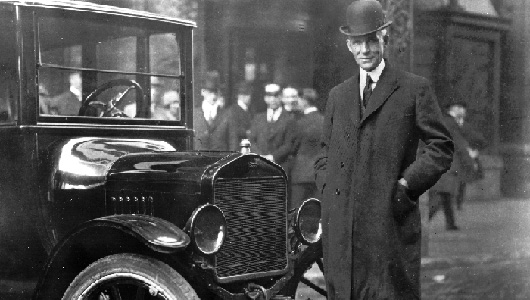
In 1879, Henry left his family to embark on a journey to Detroit, where he worked as an apprentice mechanic. His talent and dedication led to positions at James F. Flower & Bros. and Detroit Dry Dock Co. In 1882, he returned to Dearborn, this time honing his skills in operating small steam engines. Subsequently, he was hired by the Westinghouse Company to service various types of machinery.
In 1888, Henry Ford married Clara Bryant and made a living as a farm laborer and sawmill operator. The couple had one child, Edsel Bryant Ford (1893–1943).
In 1891, Ford joined the Edison Illuminating Company as an engineer. His position allowed him the time and resources to experiment with gasoline engines, leading to the development of his first self-propelled vehicle, the Quadricycle, in 1896. On June 4 of the same year, Ford test drove the Quadricycle, kickstarting his journey toward automotive innovation. Through subsequent test drives, Henry Ford refined and improved the original design.
Building on his initial success, Ford formed the Detroit Automobile Company in 1899 with other investors. However, the company quickly went bankrupt due to Ford’s focus on design improvements rather than sales. Undeterred, Ford established the Henry Ford Company and participated in races to demonstrate the superiority of his designs. Notably, he even defeated renowned racer Alexander Winton on October 10, 1901. Over time, Ford’s involvement with the company dwindled, and it was eventually reorganized as Cadillac with Henry M. Leland taking the helm.
Henry Ford, alongside eleven other investors and $28,000 in capital, founded the Ford Motor Company in 1903. At an exhibition, Ford showcased a newly designed car’s unprecedented speed record of completing a mile on the ice of Lake St. Clair in just 39.4 seconds. This achievement caught the attention and admiration of legendary racer Barney Oldfield, who drove the car across the country, effectively catapulting the Ford brand to fame throughout America.
The Ford brand: Gaining prominence across America since 1903
Henry Ford’s support for the Indianapolis 500 race solidified his status as a notable figure in the racing community. In 1914, he shocked his peers by doubling his workers’ daily wages, a move that ignited economic stimulation through increased purchasing power. Ford referred to this as the ‘wage motive.’ Additionally, his implementation of the vertical assembly line and other business strategies contributed significantly to the company’s overall success.
In 1908, Ford Motor Company introduced the Model T, a groundbreaking automobile designed by Hungarian engineer Jozsef Galamb. From 1909 to 1913, Ford showcased dismantled Model Ts in races, achieving first place in the challenging “Two Oceans” race across the United States in 1909. Ford also set a speed record by racing around a circular track at the Detroit Fairgrounds in 1911, accompanied by racer Frank Kulick.
The legendary Model T
In 1913, Ford attempted to rebuild the Model T for the Indianapolis 500 race. However, he discovered that the regulations required the car to be weighed down by 1,000 pounds (450 kg) to qualify. Faced with constraints and unsatisfactory sport regulations, Ford chose to focus on the ever-growing popularity of the Model T, ultimately discontinuing his involvement with racing.
As the Model T gained widespread recognition and dominated American roads by 1913, Ford realized that racing was no longer a necessary tool for promoting his cars. Instead, he directed his attention to the development and implementation of the moving assembly line in his factories, significantly boosting productivity. While Ford is often associated with this innovation, it is important to acknowledge the contributions of Clarence Avery, Peter E. Martin, Charles E. Sorensen, and C.H. Wills in its inception and improvement.
By 1918, half of all cars in the United States were Model Ts. With a total production of fifteen million units, Henry Ford’s design held the record for highest production volume for the next 45 years. Although it is often misquoted that Henry Ford said, “Any customer can have a car painted any color that he wants so long as it is black,” earlier models were available in various colors, including red. Black paint was later standardized for improved efficiency during the assembly line process.

Following an unsuccessful bid for political office in December 1918, Henry Ford entrusted the management of Ford Motor Company to his son, Edsel Ford. Nonetheless, Henry retained ultimate decision-making authority and occasionally overruled his son’s opinions. Together, Henry and Edsel secured full ownership of the company by buying out other investors.
In 1921, Ford Motor products accounted for 55% of the total car output in the United States. However, in subsequent years, Ford faced formidable competition from General Motors, which eventually emerged as the leading automobile company in America. Nevertheless, Henry Ford’s impact on the automotive and transportation industry remains unparalleled.
Th? Ð?t has expertly summarized (TTTÐ)



























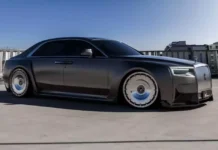



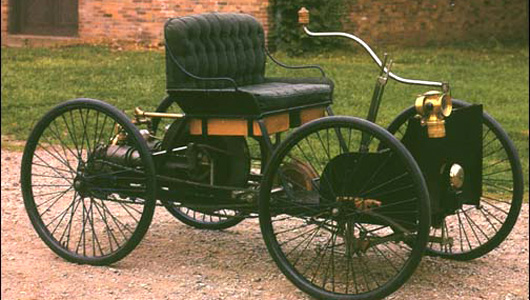
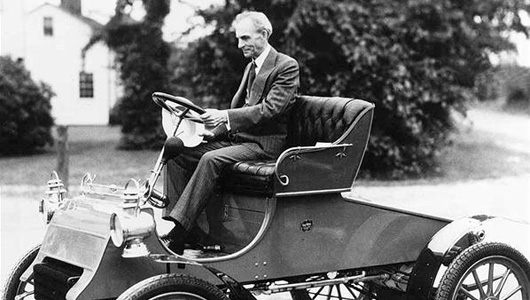
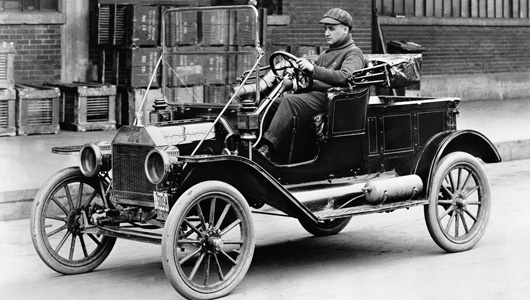
![[Quick Review] Ford Territory: A Powerful Competitor to Tucson, Corolla Cross](https://vnauto.net/wp-content/uploads/2023/11/xehay-fordterritory-10102022-3-150x150.jpg)














